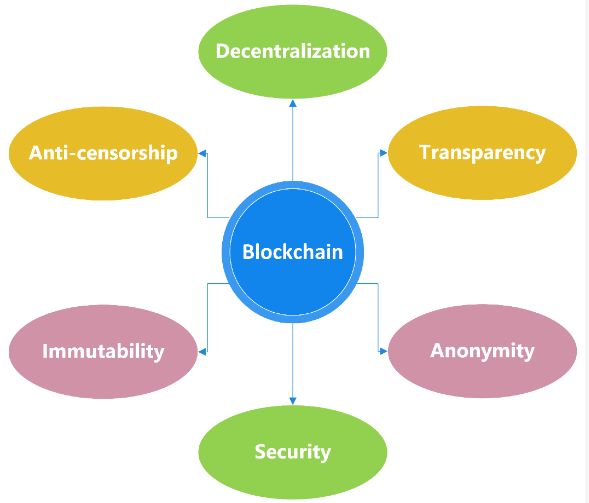Decentralized AI (a merger between AI and blockchain) combines two of the most revolutionary technological innovations in recent times:
- Artificial Intelligence (AI) allows machines and computers to imitate human thinking and decision-making processes.
- Blockchain is a distributed and immutable ledger that securely stores data and information in a decentralized and reliable manner.
Recently, scientists have been delving into the merging of these technologies in various sectors. In this article, we will provide a brief overview of how blockchain can be integrated with AI, a concept that is called “Decentralized AI.”
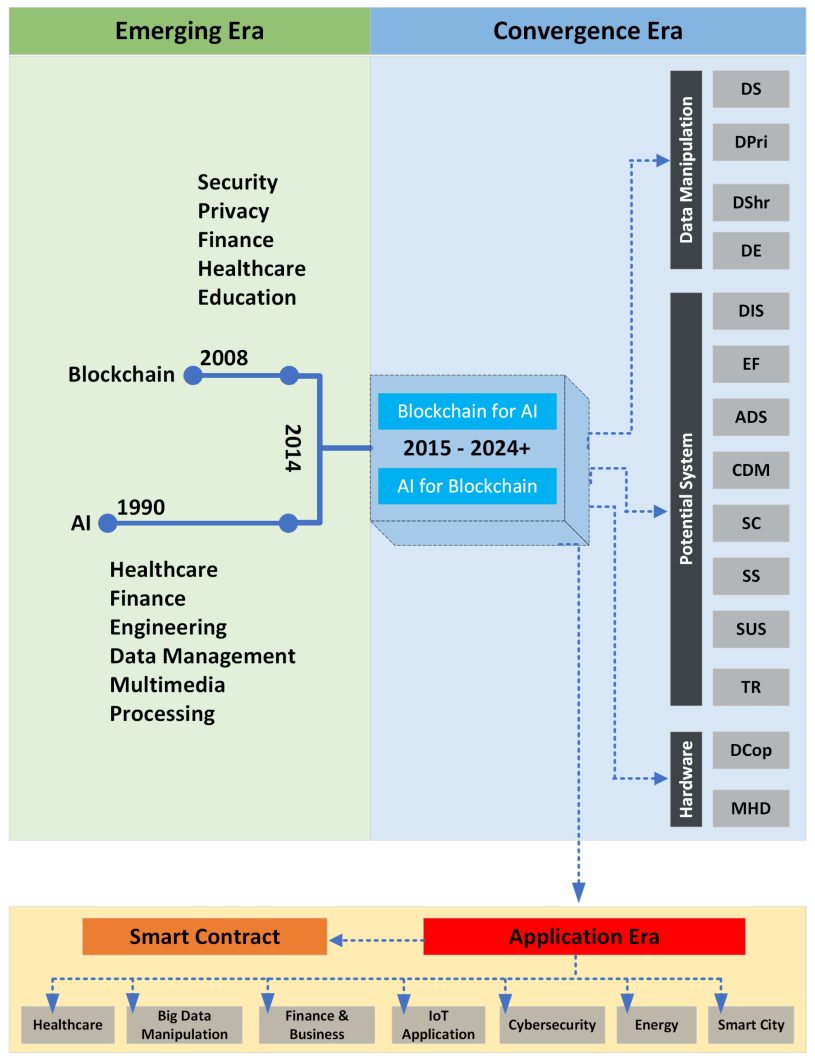
About us: viso.ai provides Viso Suite, the world’s only end-to-end Computer Vision Platform. The technology enables global organizations to develop, deploy, and scale all computer vision applications in one place. Get a demo.
What are Decentralized AI models?
Decentralization means the absence of the main decider. The main thing in decentralization is the consensus among the smallest units of the system. Thanks to this consensus, you can build different distributed systems, including decentralized AI.
Key Concepts of the Decentralized AI
Let’s imagine that coin mining can create something more than just spending resources on maintaining the network in search of a random number. What if each miner calculates a small part of a huge AI model on his working machine, without having to train the entire model?
The essence of this idea is to effectively distribute training, using the computing resources of different machines (processors, video cards). Thus, it obtains a fully finished AI model that can constantly retrain more new data sets. For training the model, miners receive certain coins, that could be spent on using the computing resources of the model network.
At some point, the AI model will be fully trained, and, it would seem, anyone can download it to their computer for free, but they will never have enough resources to run it themselves. The users will need mining to run the model. When requesting the network, the network gives a response.
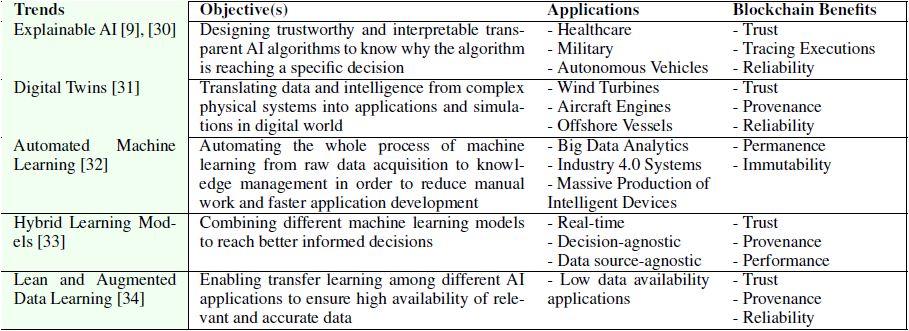
Similar to working with the GPT-4 API, each request costs the user several tokens, depending on the miners’ rates. Miners collectively process these requests in a decentralized manner and produce results. There can be multiple AI models and they can exist in a single blockchain, in the form of smart contracts.
Namely, someone, a person, or a group, creates a model contract in the blockchain-based network, allocates people to train it, and then everyone earns money on maintaining the model.
Benefits of Decentralized AI models
Decentralized AI models offer multiple benefits:
- Decentralized decision-making: Decentralized algorithms provide multiple benefits to AI by offering transparent and democratic decision structures. In blockchain, project governance is tokenized, allowing token holders to propose, vote, and implement changes. Thus, they ensure that decision-making is distributed among all stakeholders, promoting inclusivity and collaboration. Moreover, developers and researchers from different backgrounds can contribute, increasing the accuracy and efficiency of the system.
- Greater Efficiency: The efficiency of decentralized AI is increased. These systems handle tasks concurrently and can grow and adapt on demand, thanks to a network of nodes. Therefore they boost overall capability and performance without putting undue strain on any of the components.

- Less Bias and Fair Results: Decentralized AI lessens bias and generates more equitable and balanced results by utilizing a variety of inputs and distributed decision-making. Furthermore, the output of an AI model is guaranteed to be stable and dependable through cryptographic verification and proofs.
- Improved Security: Data security and privacy are improved by decentralized AI systems. The risk of hacking and unauthorized access is decreased because data is processed locally and dispersed throughout the network. By adding an unchangeable layer of protection, blockchain technology ensures the accuracy of the data and model.
- Accountability and Transparency: Decentralized AI systems with consensus, by nature, encourage accountability and transparency. Users and developers can test and audit AI processes, boosting accountability and confidence.
- Social/Economic Effect: By supporting equal access and reducing entry obstacles for smaller players, decentralized Artificial Intelligence (AI) eases access to AI technology. This promotes innovation, fosters a competitive atmosphere, and guarantees that society benefits from artificial intelligence. Decentralized AI also shields individual interests from centralized groups’ widespread monitoring and manipulation.
Blockchain and AI
Blockchain is an unchangeable, shared network that enables many parties to exchange encrypted data instantly, transparently, and concurrently as they perform transactions. Business owners can track multiple transactions, orders, accounts, payments, etc. via the blockchain network.
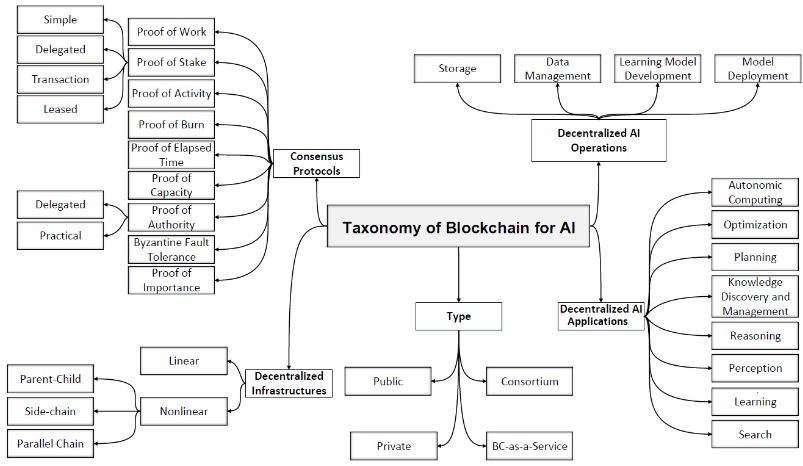
Implementing AI over Blockchain
To create a powerful combination of AI and blockchain, the following artifacts need to be considered:
- Consensus Algorithms: In AI blockchain networks, consensus algorithms enable network members to concur on transactions while preserving the integrity of the distributed ledger. They facilitate reaching an agreement on the current status of the blockchain.
- Smart Contracts: Smart contracts mean to achieve an agreement without an intermediary. Engineers implement smart contracts via blockchain and automation processes. AI can analyze real-time data, define terms, and start smart contract execution. For instance, a supply chain smart contract driven by AI solutions can proactively redirect goods in the event of unforeseen delays.

In addition, AI analyzes past data from smart contracts to uncover patterns and produce correct decisions. E.g. in banking, an AI-based smart contract can define loan interest rates based on market conditions.
- Machine Learning: Blockchain systems use ML models that process large volumes of data to find trends, predict outcomes, and enhance their efficacy over time. These are essential for giving blockchain applications a flexible and anticipatory layer. Machine learning via blockchain has some promising applications. Moreover, ML models can analyze financial transactions on the blockchain to identify real-time frauds.
- Middleware (APIs): The blockchain AI system needs to exchange data and interface with various platforms and databases to operate without a hitch. This is where middleware and APIs are useful.
APIs enable safe data sharing and communication between various systems by serving as bridges. In addition, a software layer called middleware makes it easier for different apps to communicate and share data with the blockchain network.
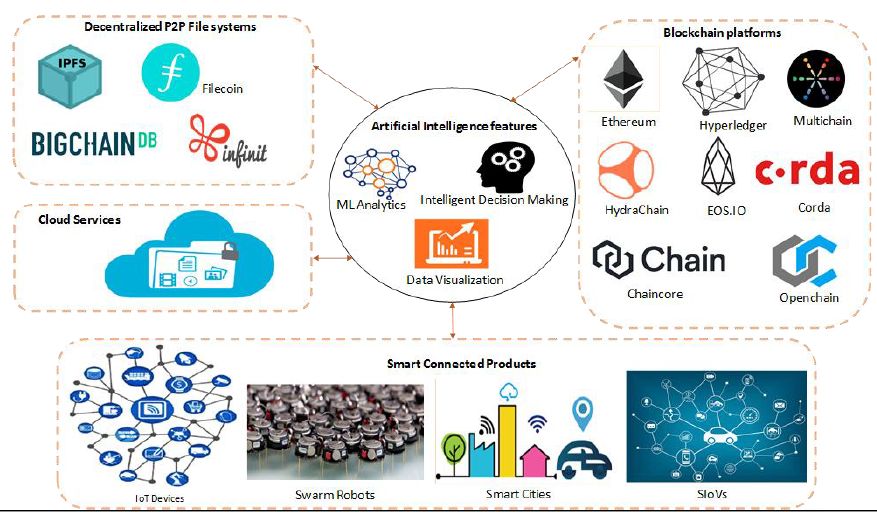
Training AI models on a Decentralized network
Decentralized AI training means distributing AI-driven training on multiple nodes in the blockchain network. This technology uses the blockchain to record and organize AI training transactions, guaranteeing data security and integrity during the process. Moreover, it doesn’t depend on a centralized data repository or processing power.
Numerous decentralized nodes are used to train AI models. So, to improve the model’s capacity to utilize a variety of data sources without jeopardizing data privacy, each node may train the model using distinct subsets of data.
Depending on the protocol, the revised weights or parameters, or other model enhancements, are either pooled in a decentralized fashion or given back to a central node after training. Also, blockchain guarantees the security of this aggregation process and the proper recording and reward of each node’s efforts.

Secure Data sharing by using Blockchain
Data owners can contribute their datasets to the decentralized AI model training without actually moving the data off their premises. The blockchain serves as a record book, documenting data consumption while guaranteeing the preservation of each participant’s data rights.
Decentralized AI reduces data violation risk by letting data stay in its local surroundings while taking part in the training process. Therefore, the secure nature of blockchain guarantees the data to be tamper-proof.
Data integrity is guaranteed by the decentralized architecture of the blockchain, which means that once information is uploaded to the chain, it cannot be removed or changed without network approval. Only authorized individuals possessing the necessary cryptographic keys can access encrypted data stored on the blockchain.
Applications of Decentralized AI
AI-blockchain combination already produced significant results in multiple use cases. Some of them are discussed below:
Banking and Finance
Banks are testing decentralized asset technologies more recently and integrating blockchain into their operations. Blockchain technology records every transaction in the chain through an immutable ledger. When the network completes several transactions, a large amount of data is gathered, which may be processed and categorized using AI algorithms.
Telcoin (introduced in 2018), a cryptocurrency based on the Ethereum blockchain enables financial payments and is accepted by telecom operators. Because AI is superior at pattern recognition and anomaly detection in massive volumes of data, Telcoin creators combined the capabilities of blockchain and AI. Thus, they handle a variety of applications, such as anticipating money laundering.
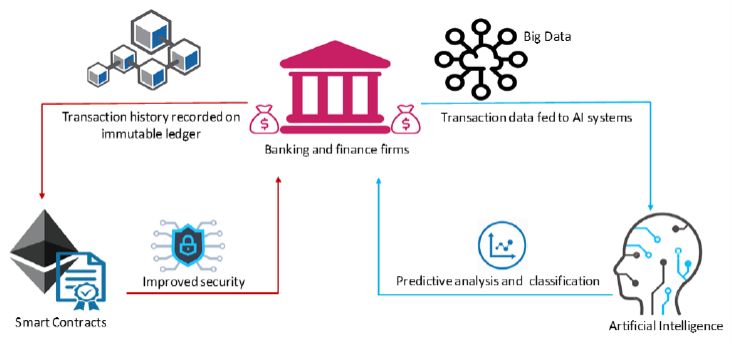
The figure above displays an example of blockchain and AI technology that can be applied in banking and financial institutions. Also, AI techniques can lessen the inherent volatility of cryptocurrencies, and manage the large spectrum of cryptocurrencies.
Health and Medicine
Mamoshina et al. (2018) combined AI and blockchain technology in their biomedical research (healthcare domain). The authors presented a decentralized model to process personal data in an AI-moderated healthcare data exchange via the blockchain.
They utilized machine learning algorithms for data extraction, pattern classification, and prescription prediction. And, the ML techniques employed graph-enabled data to generate latent variables by a Bayesian network, a graph database based on cause-and-effect correlations.
The Bayesian network produces accurate predictions between unrelated data when used with health data. The immutable transaction log records the relationships between all entities in the healthcare graph database, including doctors, specialists, and patients. Also, it records all actions, such as treatment plans, prescriptions, and medication taken by patients.
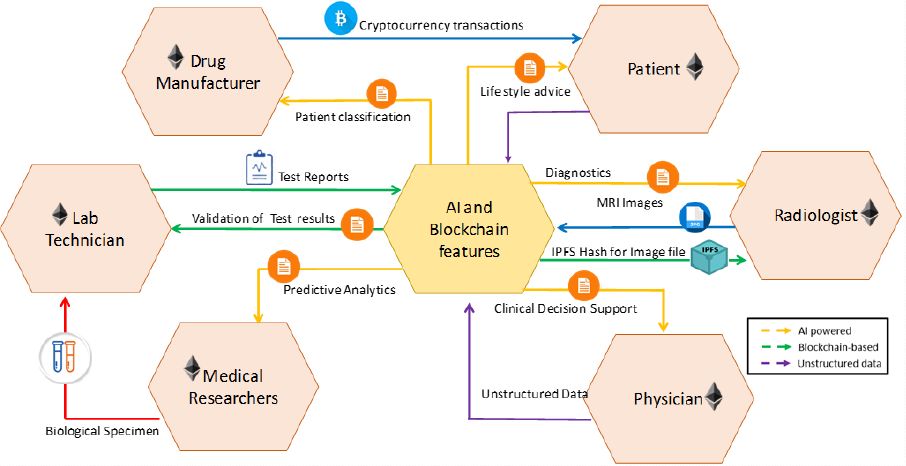
Energy and Power systems
Mylrea et al. (2017) researched how blockchain technology can modernize and automate energy and IoT infrastructure toward a stable system. The energy sector can gain multiple benefits by combining AI and blockchain technologies and their features.
The authors analyzed how AI-based blockchain solutions can enhance the exchange of energy resources and assist in better cyber protection in a distributed environment. They applied neural networks to analyze and understand the data patterns. Also, they utilized smart contracts to secure the energy data and its transactions on the decentralized network.
If properly executed, this strategy can replace conventional energy meters with a distributed ledger that is dynamic and decentralized. Hence this revolutionary combination enables investors and stakeholders in renewable energy infrastructure to provide services distributed and transparently, with agreements signed on smart contracts.
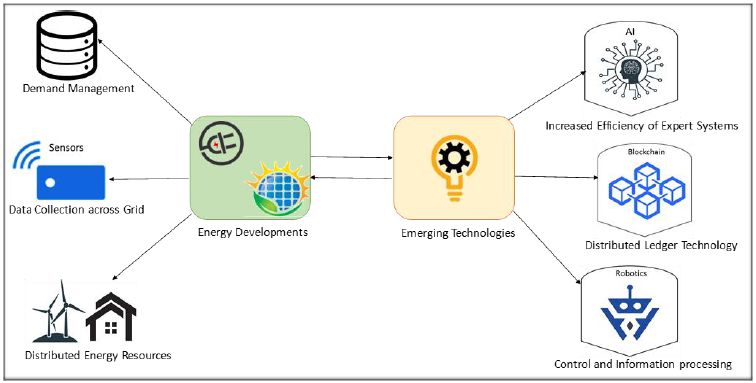
Future Outlook for Decentralized AI Models
The decentralized AI area is still in its infancy, and further study and testing will be needed to address its problems. Nonetheless, it has enormous potential to revolutionize AI research, especially in IT security, where access to a wide range of information is crucial.
We anticipate more reliable solutions to appear as blockchain and AI technology advance, making decentralized AI training a common practice in the future.
Frequently Asked Questions
Q1. What is decentralized AI?
A. The essence of decentralized AI is to effectively distribute model training, using the computing power of different machines (processors, video cards). Thus, it produces a fully finished AI model that can constantly retrain more new data sets.
Q2: What are the Smart contracts and how are they used?
A. Smart contracts establish an agreement among multiple parties without the need for an intermediary. You can implement your smart contract by connecting to a blockchain network and utilizing its contract APIs.
Q3: How to implement AI over blockchain?
A. AI over blockchain means distributing the AI training on multiple nodes in the blockchain network. This technology uses the blockchain to record and organize AI training transactions, enhancing data security and integrity. In addition, AI analyzes past data from smart contracts to uncover patterns and produce correct decisions.
Q4: What are the most promising applications of the AI-blockchain systems?
A. The most promising applications of AI-blockchain systems include banking and finance, healthcare, the energy sector, IT security, agriculture, etc.
